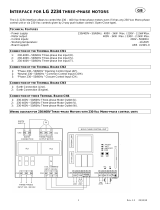
-- 2 --toce
LIST OF CONTENTS Page
READ THIS FIRST 3.................................................................
INTRODUCTION 3...................................................................
TECHNICAL DATA 4.................................................................
WIRING DIAGRAM 5.................................................................
Component description 5..........................................................
ESABMig 400t / 500t; 400 -- 415 V 8................................................
ESABMig 400t / 500t; 230 -- 500 V 10................................................
DESCRIPTION OF OPERATION 12.....................................................
AP1 Control circuit board 12........................................................
1 Power supply, circuit board AP1 12.................................................
2 Display output 13................................................................
3 Machine type / Test input 14.......................................................
4 Fixed / controlled firing angle 14...................................................
5 Synchronising 15................................................................
6 Thermal overload switch 15.......................................................
7 Arc voltage input 16..............................................................
8 Shunt input 17...................................................................
9 Voltage reference 17.............................................................
10 Crater filling 18..................................................................
11 Start/Stop 18...................................................................
12 Thyristor circuits 19..............................................................
13 Processor 20....................................................................
14 Presetting 21....................................................................
AP1 Component positions 22.........................................................
AP2 Suppression circuit board 23...................................................
SERVICE INSTRUCTIONS 24..........................................................
What is ESD? 24...................................................................
Test routine 25.....................................................................
Fitting instructions, thyristor modules 27............................................
INSTRUCTIONS 28...................................................................
SAFETY 28........................................................................
INSTALLATION 29..................................................................
OPERATION 30....................................................................
MAINTENANCE 32.................................................................
F AULT TRACING 32................................................................
SPARE PARTS LIST 33...............................................................
ACCESSORIES 44....................................................................
NOTES 47...........................................................................
Rights reserved to alter specifications without notice.

























